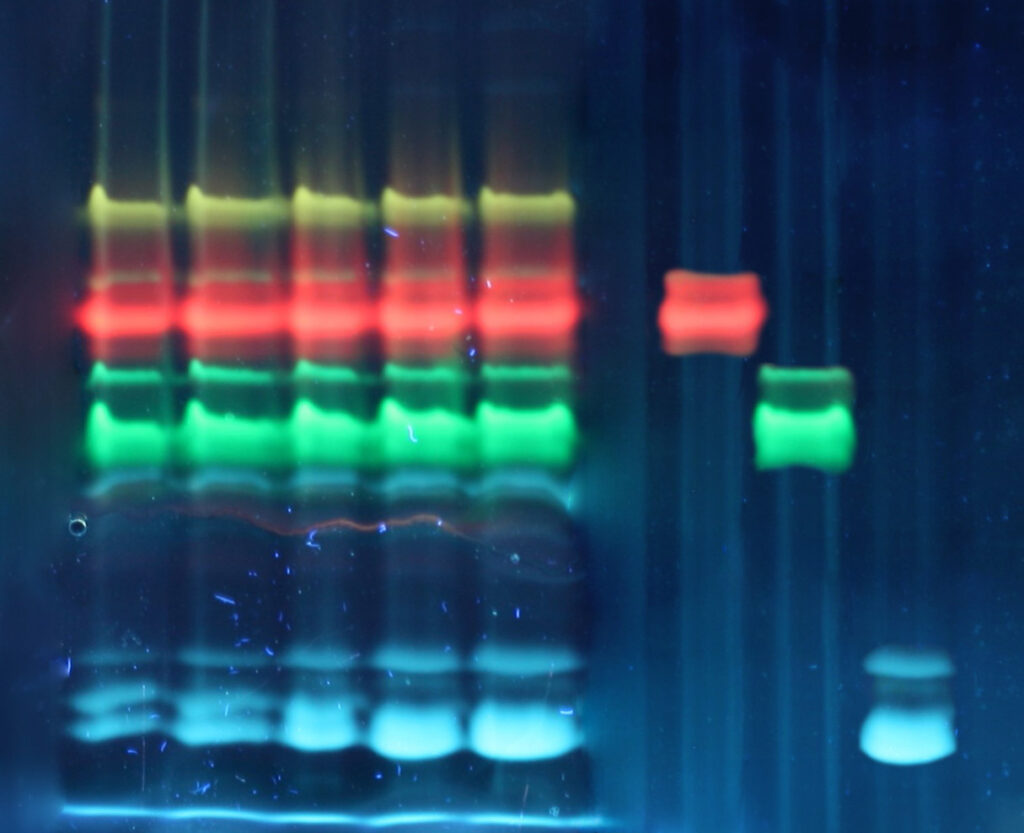- Sortase A is a bifunctional protein displaying both protein ligase/ transpeptidase and cysteine protease activities.
- Facilitates protein ligation under mild, physiological reaction conditions. Allows site-specific posttranslational generation of fusion proteins and of non-peptidic bioconjugates, which may not be synthesizable by standard molecular cloning techniques.
- Sortase A tolerates incorporation of oligoglycine residues containing C-terminal synthetic substituents. Thus, Sortase A permits ligation of peptides to native and non-native peptidic molecules, to proteinogenic and non-proteinogenic (“unnatural”) amino acids, as well as to non-peptidic functional groups, such as nucleic acids, fluorophores, dyes, antibiotics and sugar derivatives.
- Applicable for immobilization of proteins to solid surfaces, for cell-surface labelling of living organisms, for protein circularization, and for posttranslational incorporation of novel functionality in proteins which cannot be genetically encoded and thus are not accessible via molecular cloning techniques.
- Sortase recognizes solvent-exposed LPXTG recognition motifs and cleaves between the threonine and glycine residues, respectively.
- Proteins with an accessible (solvent-exposed) LPXTG recognition motif are substrates. Target peptides carry one (or more) solvent-exposed N-terminal glycine residues, serving as nucleophile. Efficient targets are oligoglycine probes, which may carry C-terminal functional groups.
- The recognition sequence LPXTG may be located either at C-termini or within flexible loops of substrate proteins, as long as the recognition site is sterically accessible to the enzyme, i.e. solvent-exposed. For efficient cleavage, the glycine of the LPXTG recognition motif must carry a peptide bond to at least one additional amino acid. The minimal C-terminal recognition sequence with full functionality is LPETGG.
- Sortase cleavage products serve as substrates for ligation. Both, protein ligase and protease activities cannot be separated. Consequently, Sortase A mediated reactions reach an assay-specific equilibrium between ligation and cleavage activities.
- Ligation efficiency is dependent on the structure and the concentration of both substrate and target proteins. Fusion protein yield is highly assay-dependent and may vary from a few percent up to 90%.
- N-terminal protein labelling is possible by moving the LPXTG recognition site from the substrate protein to the C-terminus of the short peptide probe.
 |
Vizualization of Sortase A madiated ligtaion of GFP with RFP resulted with creation of new fluorescent protein. Gel : SDS PAGE with not heated samples detected with 2,2,2-Trichloroethanol, substrate proteins GFP (green) and RFP(red) ligated with Sortase A (blue), new fluorescent protein GFP-RFP (yellow). |

